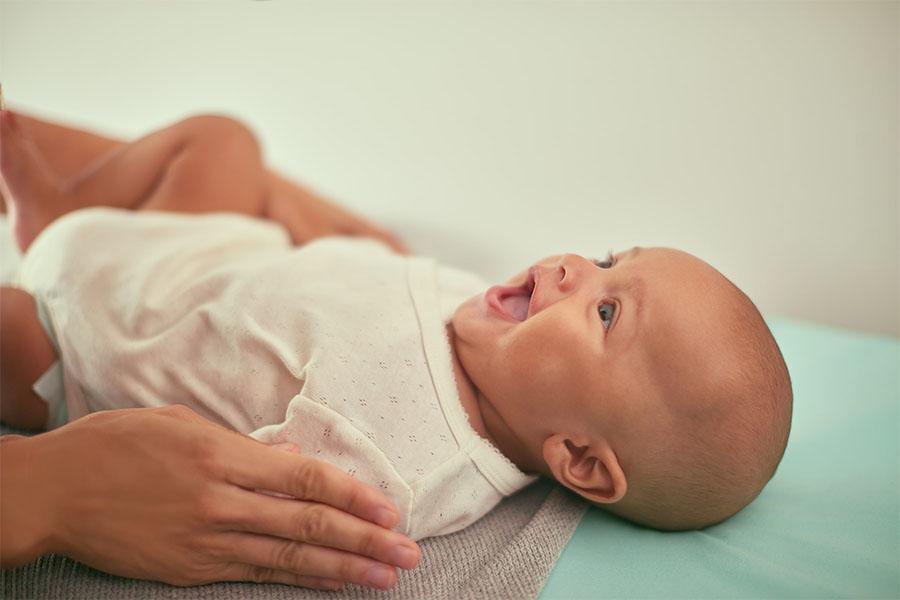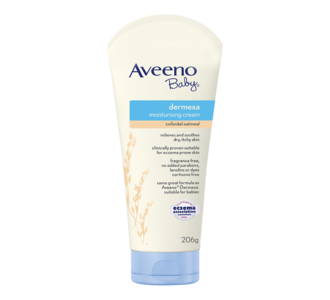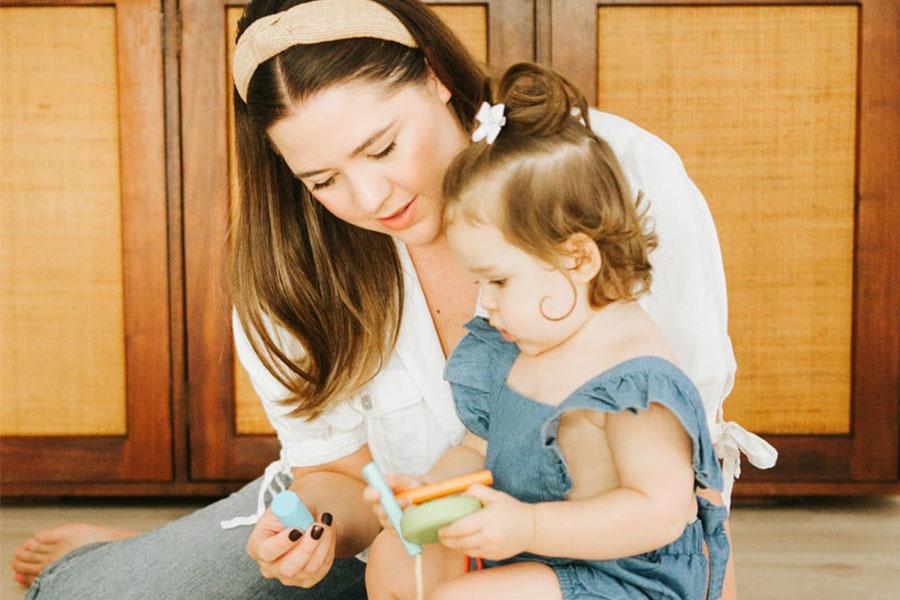
Eczema, or atopic dermatitis , is a common skin condition affecting up to 25% of children, most of whom develop symptoms in their first 12 months of life. While there is no cure, it can be effectively managed with a plan. And though it’s neither contagious nor life-threatening, the accompanying dry skin, itchiness, and inflammation of eczema rash can certainly make life less enjoyable for both baby and parents. With a thoughtful, custom eczema rash treatment plan, both parents and baby can be left happier.
What Causes Eczema Rashes
Eczema is likely caused by a combination of genetic and environmental factors. In some cases, atopic dermatitis is hereditary, meaning that if either or both parents suffer from eczema, asthma, or seasonal allergies, there is a greater chance that baby will also experience eczema. Specifically, the genetic cause is associated with differences in the skin’s protective proteins or an overactive immune system that responds too aggressively to environmental triggers.
Environmental triggers, or the molecules that baby’s skin comes into contact with throughout her day, may also cause or exacerbate eczema. Common product triggers include wool, synthetic fabrics, household goods with fragrances such as detergents or fabric softeners, baby powder, and certain metals like nickel. It’s important to be aware that even “natural” or “botanical” products may still prove irritating for eczema rash.
Seasonal environmental triggers such as pollen, heat, and especially the cold, dry air of winter are other common culprits, as well as interior air-borne triggers such as dust mites and pet dander.
In rare instances, certain foods may also contribute to eczema flare-ups. However, before cutting any foods from your or your baby’s diet, you’ll want to speak with a healthcare provider.
Finally, stress has also been linked to eczema rash flare-ups. This is one reason why diagnosing and treating infant eczema as early as possible is so important as it can help reduce the emotional distress baby may be experiencing from the physical discomfort of his dry, itchy skin.

Treating Your Baby’s Eczema Rash
Though many children “outgrow” eczema by the time they reach age four, and a large majority no longer suffer symptoms by the end of adolescence, reliable management tips are especially invaluable for maneuvering the early years when baby cannot fully verbalize their discomfort.
For Your Baby’s Face
If you first discovered the eczema rash on baby’s face, you’re among the majority of parents because it typically appears on the forehead and cheeks. On fair skin, these patches appear red, while on darker skin, it may look brown, grey, or even purple in tone.
Quickly address any dirt or grime baby may acquire throughout the day to keep the affected areas free from potential irritants. Use fresh, gentle cloths or fragrance-free, hypoallergenic wipes before gently patting dry, and then immediately moisturize with an eczema-targeted product such as Aveeno® Baby Dermexa Moisturising Cream. If you’re using a medicated product, be sure to use as directed.
It’s also important to ensure baby isn’t scratching the eczema rash on her face. In addition to keeping nails trimmed short, you may wish to use natural cloth mitts over baby’s hands.
For Your Baby’s Body
As time progresses and weather changes, you may also discover the eczema baby rash on their back, stomach, legs, and arms. As with the face, you’ll want to be extra sensitive to eliminating topical triggers through a lukewarm bath using only hypoallergenic products such as AVEENO® Baby Cleansing Therapy Moisturizing Wash and natural fabric cloths that have been washed in non-irritating detergents.

Managing Future Flare Ups
Once you’ve been able to calm your baby’s eczema rash, it’s essential to keep up the good work. Though it’s normal to feel elated when infant eczema starts to subside, letting your guard down and abandoning your routines can lead to unfortunate flare-ups or even worsening conditions. Below are a few tips for successfully continuing baby’s eczema rash treatment.
Maintain Daily Skincare: An important step you can take in managing eczema rash is to engage a gentle skincare routine every day . Stick with the products and routines that have been working for you to help avoid flare-ups. As such, helping them discover the importance of such routines at an early age will benefit you both.
Identify & Eliminate Triggers: Uncovering specific triggers and removing them from baby’s environment is also a key step in eczema rash treatment. Remember, there can be a lag time between when baby is exposed to an environmental irritant and when their flare-up presents. A “trigger diary” made from a pocket-sized notebook can be a helpful tool for tracking exposures.
Explore Different Therapy Options: If you find yourself on a chronic roller coaster of severe eczema with only short periods of improvement, you may wish to speak with your child’s healthcare provider about potential treatment alternatives such as prescription topical medicines, wet wrapping, biologics, or diluted bleach baths. These stronger solutions, in addition to allergen patch-testing, may provide much-needed relief for more consistent or longer-lasting results.
As a chronic condition, recurring eczema can be a challenge to treat, but with the right knowledge and products on your side, managing your baby’s rash will get easier. The most important tool? Being more persistent with your care plan than the eczema itself.

